The Hart House by Casey Brown Architecture is located just about 18 miles north of Sydney, Australia-but it feels worlds away. Perched on a hill overlooking Great Mackerel Beach, the home opens up to the wide expanse of ocean beyond.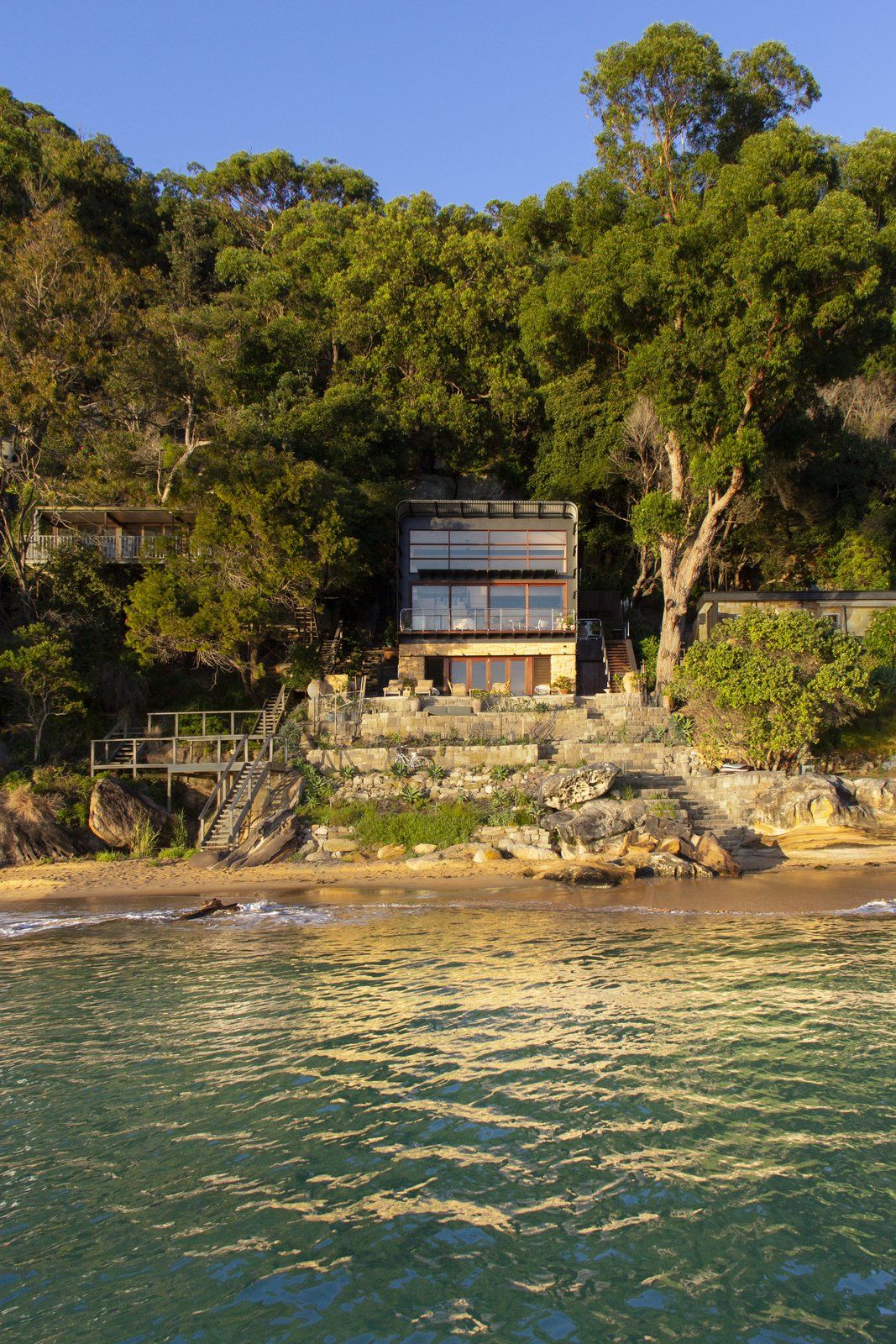
The Hart House is perched between a steep cliff and the grand expanse of ocean below.
Casey Brown Architecture conceived of the residence as an updated and modern version of the typical one-room Australian beach shack. It's designed as a simple box closed to all sides but one, which opens to the beach below. The building is wrapped in a protective shell made out of corrugated metal, which shelters it from the harsh salty air, cold winters, southerly winds, and brushfire-prone landscape.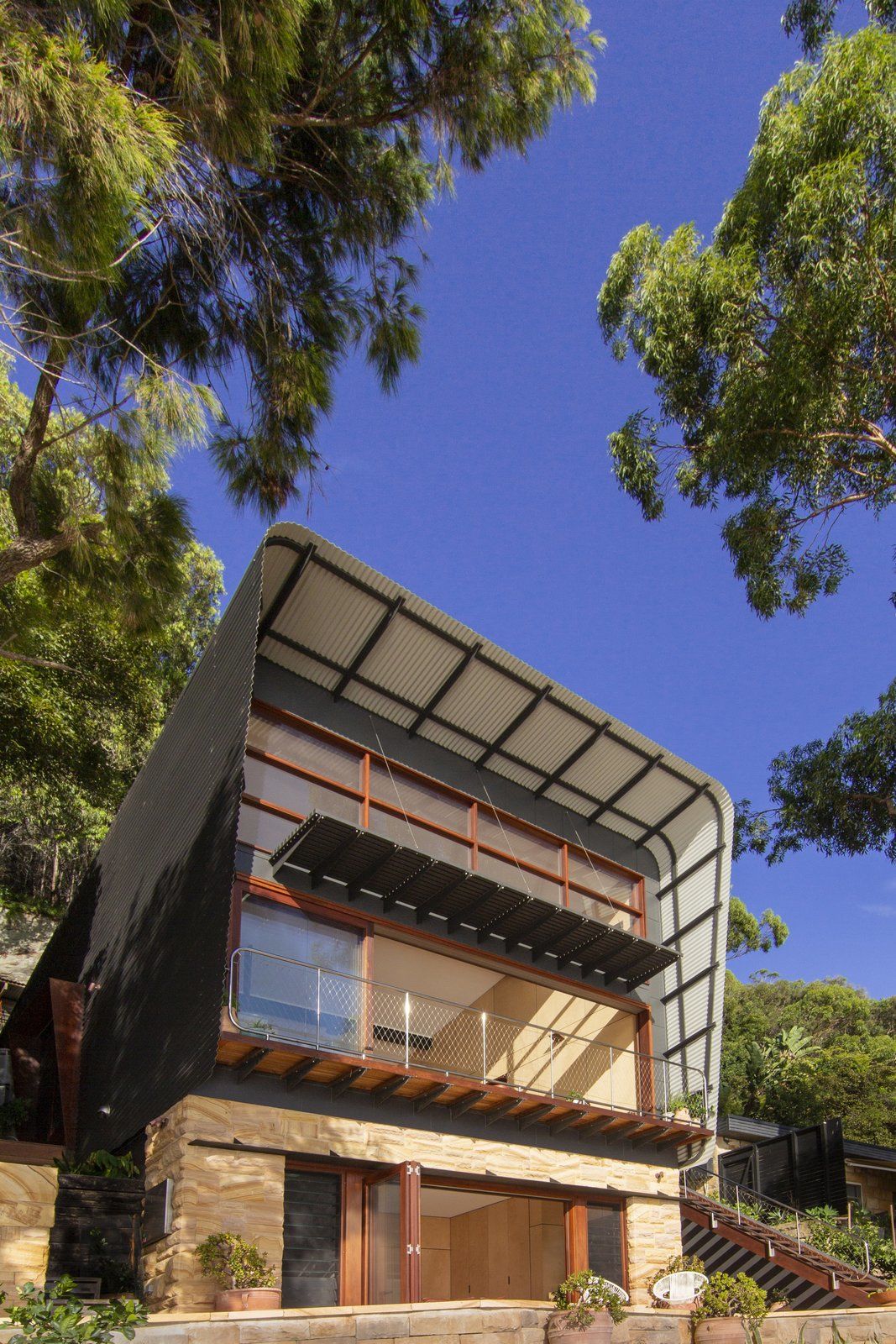
The beach shack's corrugated metal shell is detailed with curved edges. The building faces northeast to take advantage of ample sunlight and ocean views.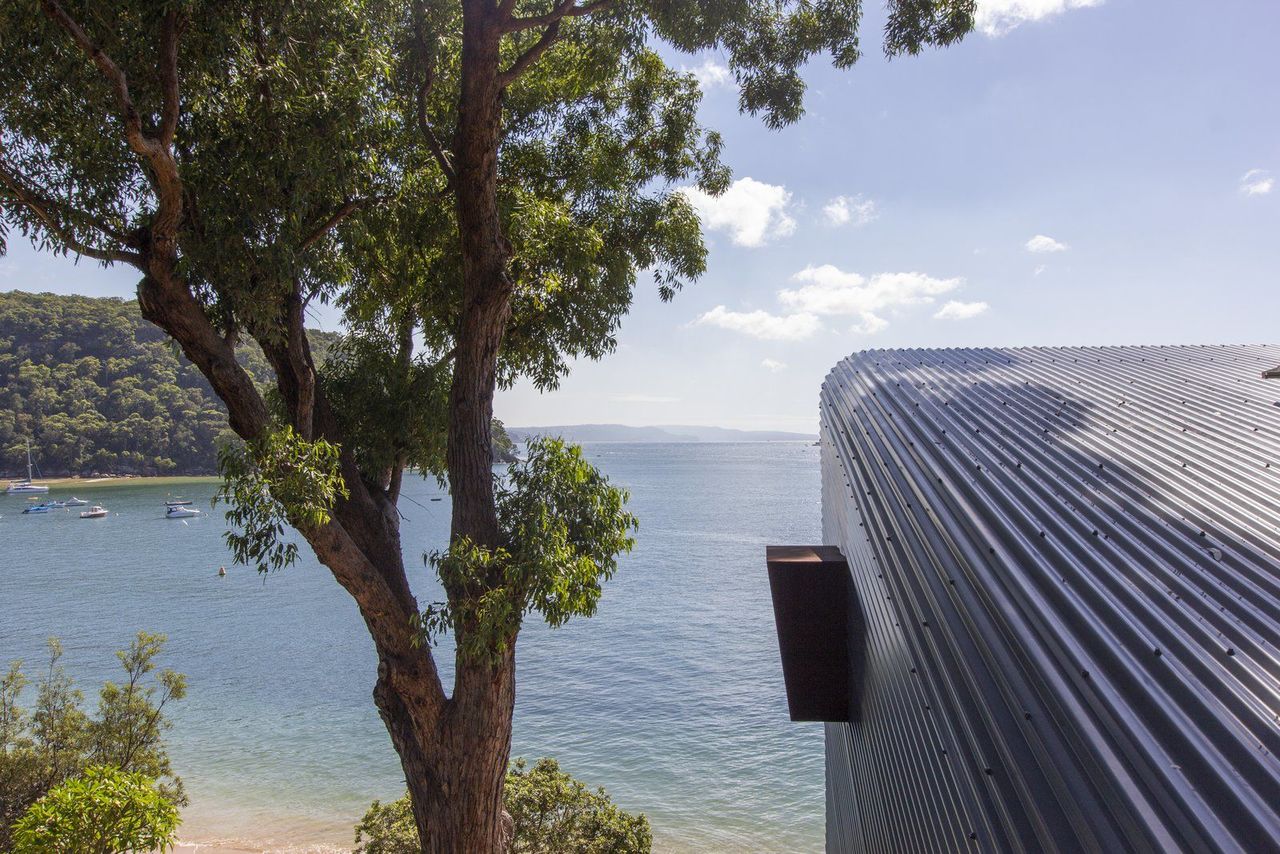
The view from the home towards the water, sky, and surrounding cliffs.
Steep cliffs with abundant foliage lie above the home. Below, a series of stone terraces and steps lead down to the beach. The main level of the home consists of a single double-height space with dining, kitchen, and living areas, as well as a utility core with a bathroom and pantry. A lofted mezzanine sits above the utility core.
The home's punched windows are shaded by Cor-Ten steel.
The wall facing the water has generous floor-to-ceiling sliding glass doors that open up completely to the outside deck. Carefully placed punched windows provide passive cross ventilation to the other three sides of the home.
The interior features durable materials (like birch plywood and concrete) that can withstand the harsh oceanside climate.
Large panes of glass at the clerestory level allow sunlight to brighten the room. Just off the large, double-height space lies a small studio that also looks directly out to the water. The basement level holds the bedroom with an en suite bathroom and direct access to a terrace constructed from sandstone sourced on-site. 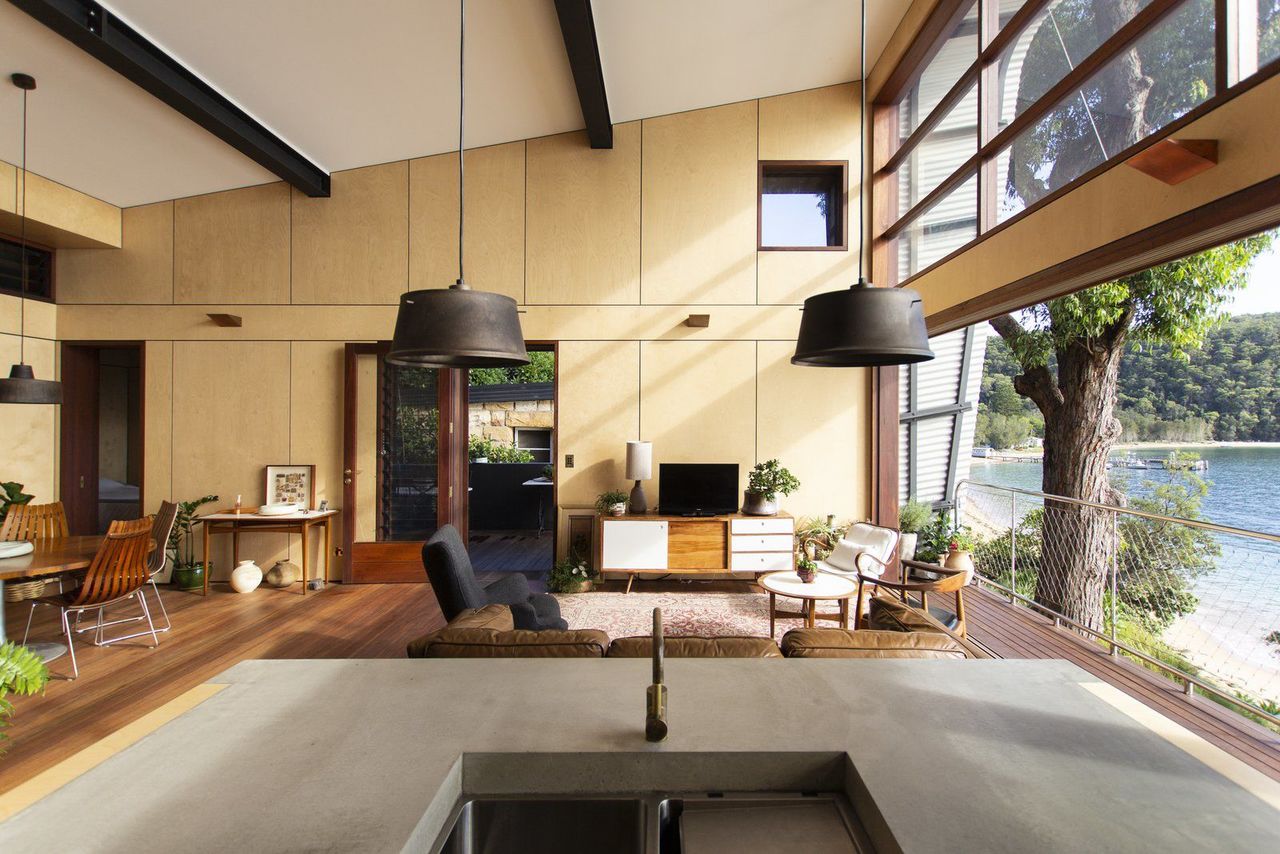
The angle of the roof is oriented to take full advantage of sun and views. The ceiling is a simple white surface that reflects light.
One of the clients is a ceramicist, so Casey Brown Architecture selected the project's materials based on quality, tactility, and texture. The interior spaces are clad in birch plywood, with timber flooring and concrete benches.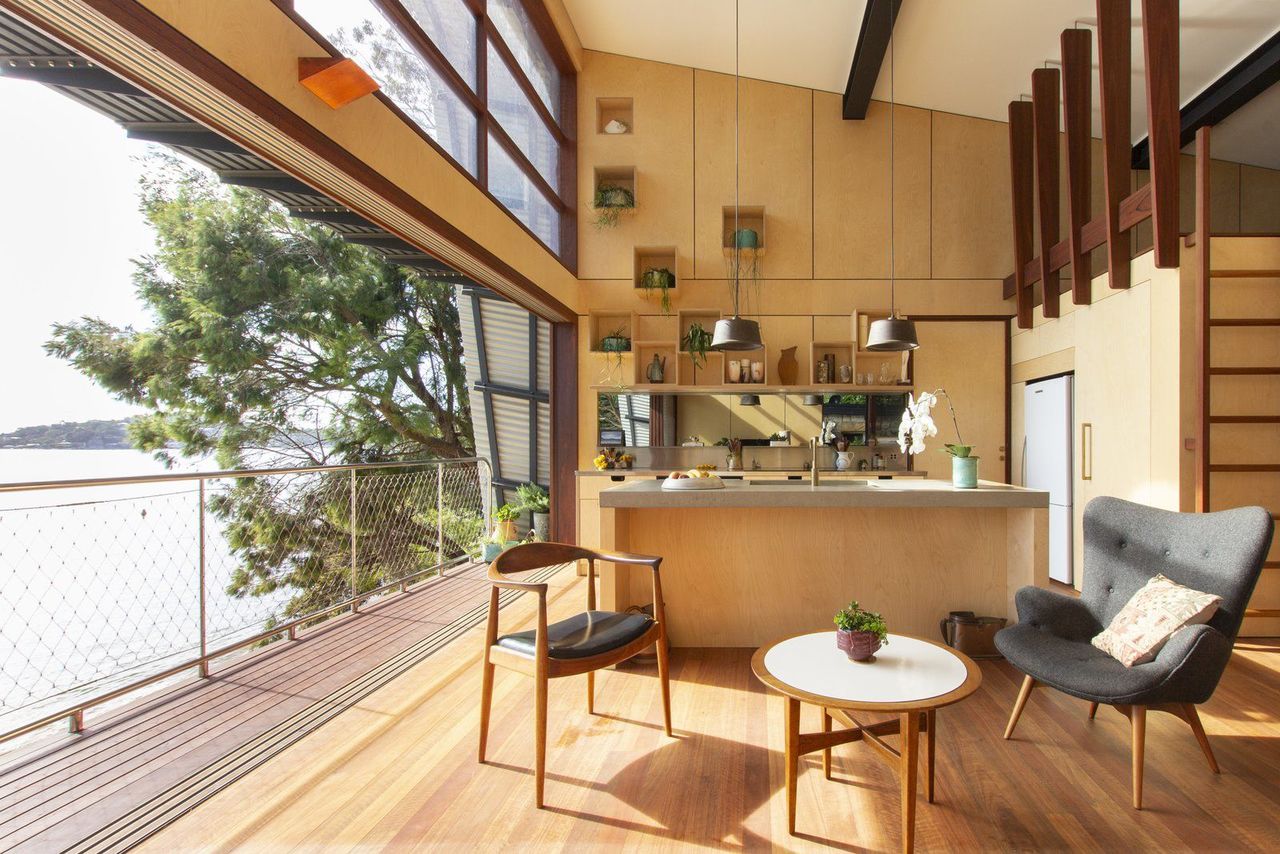
The main level opens up to provide complete access to the deck.
The exterior and interior flooring, decking, and window and door frames are made from spotted gum-a type of eucalyptus tree commonly found in Australia that is known for its sustainability and resistance to fire.
The kitchen, dining, and living area features simple furnishings and a neutral palette-the views are the focal point in the design.
The corrugated metal shell strikes contrast with the weathered steel door and window frames, tying in to the red hues of the spotted gum. The roof holds several solar panels and rainwater harvesting equipment, and waste is processed on-site, which gives the home a light carbon footprint. 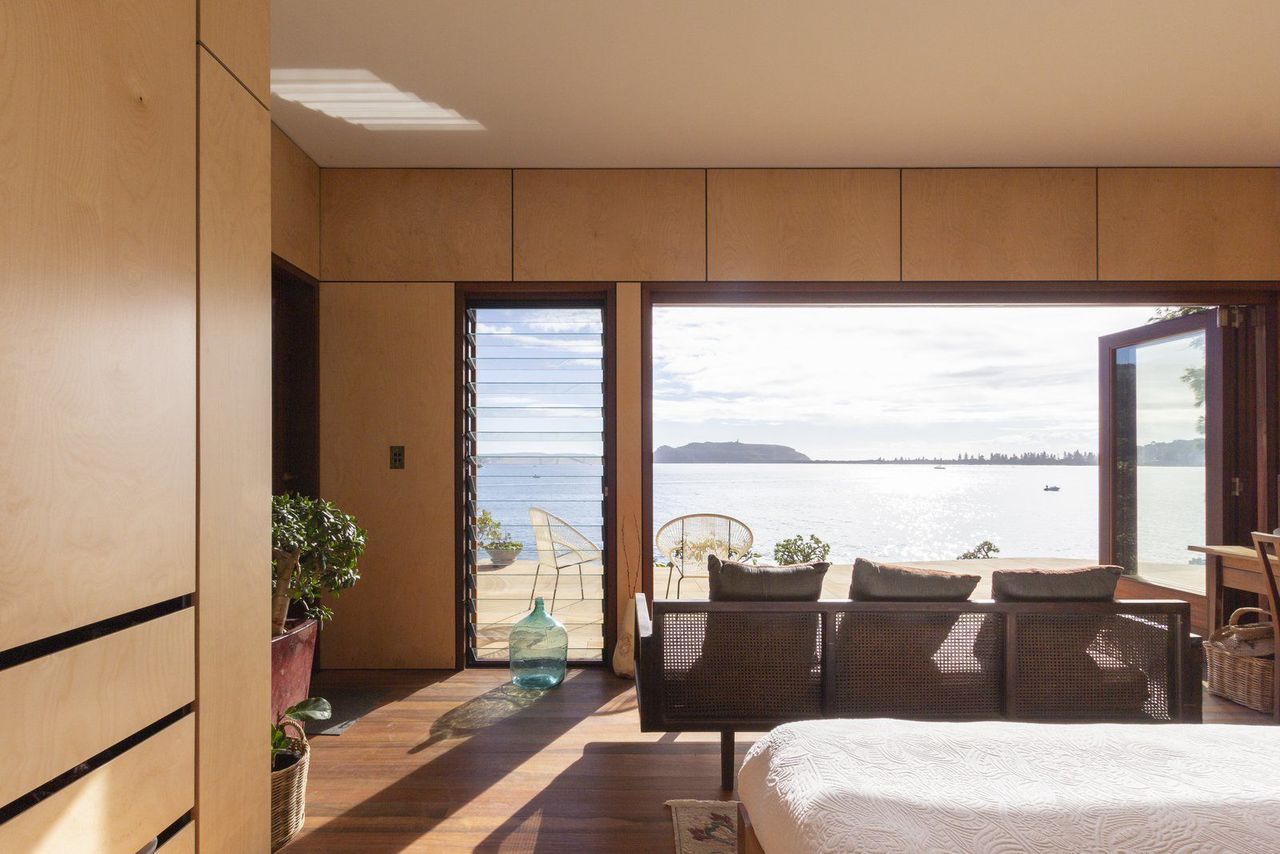
The bedroom takes advantage of ocean views with glazed doors and louvered windows.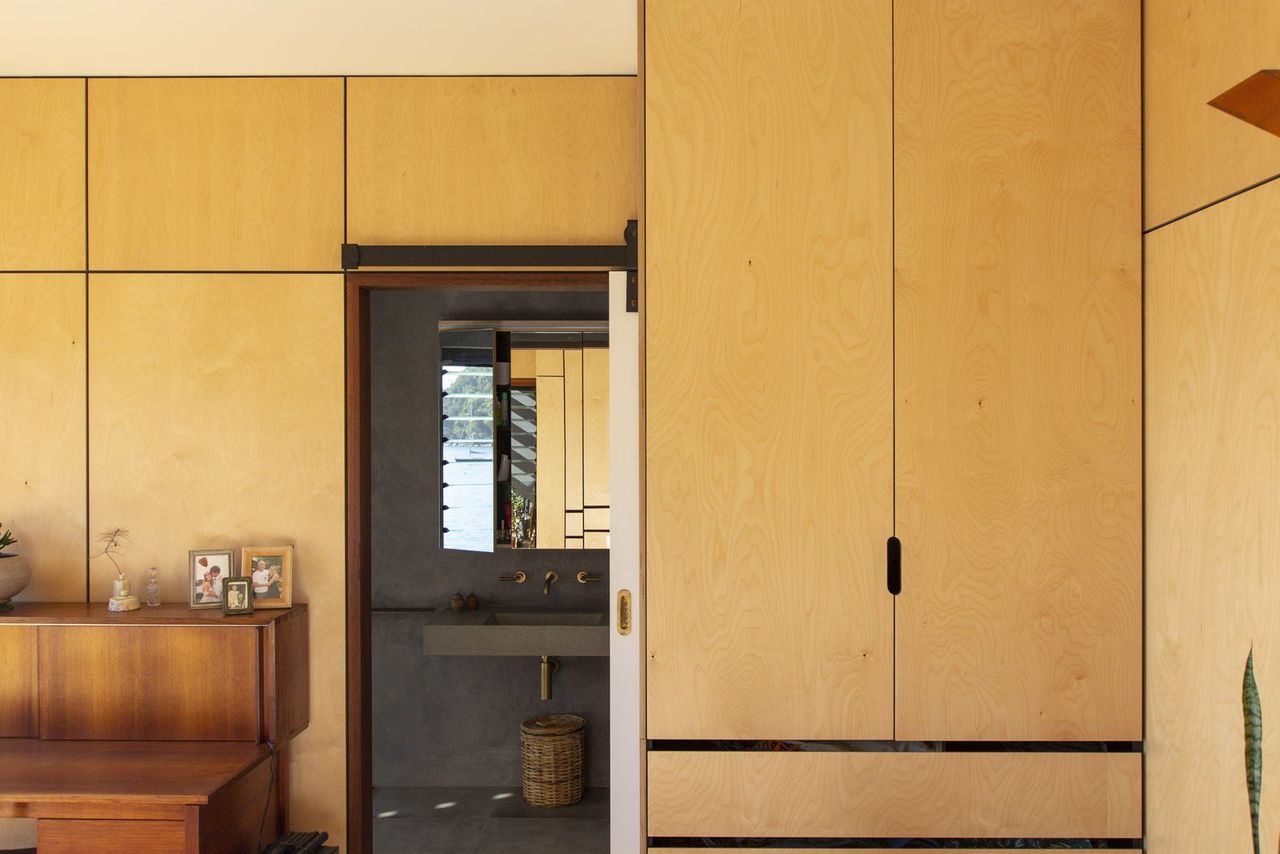
The interior finishes in the bedroom and adjacent bathroom are similar to those on the main floor: birch plywood, concrete, and neutral tones.
The basement features a bedroom and en suite bathroom that open directly onto a sandstone terrace.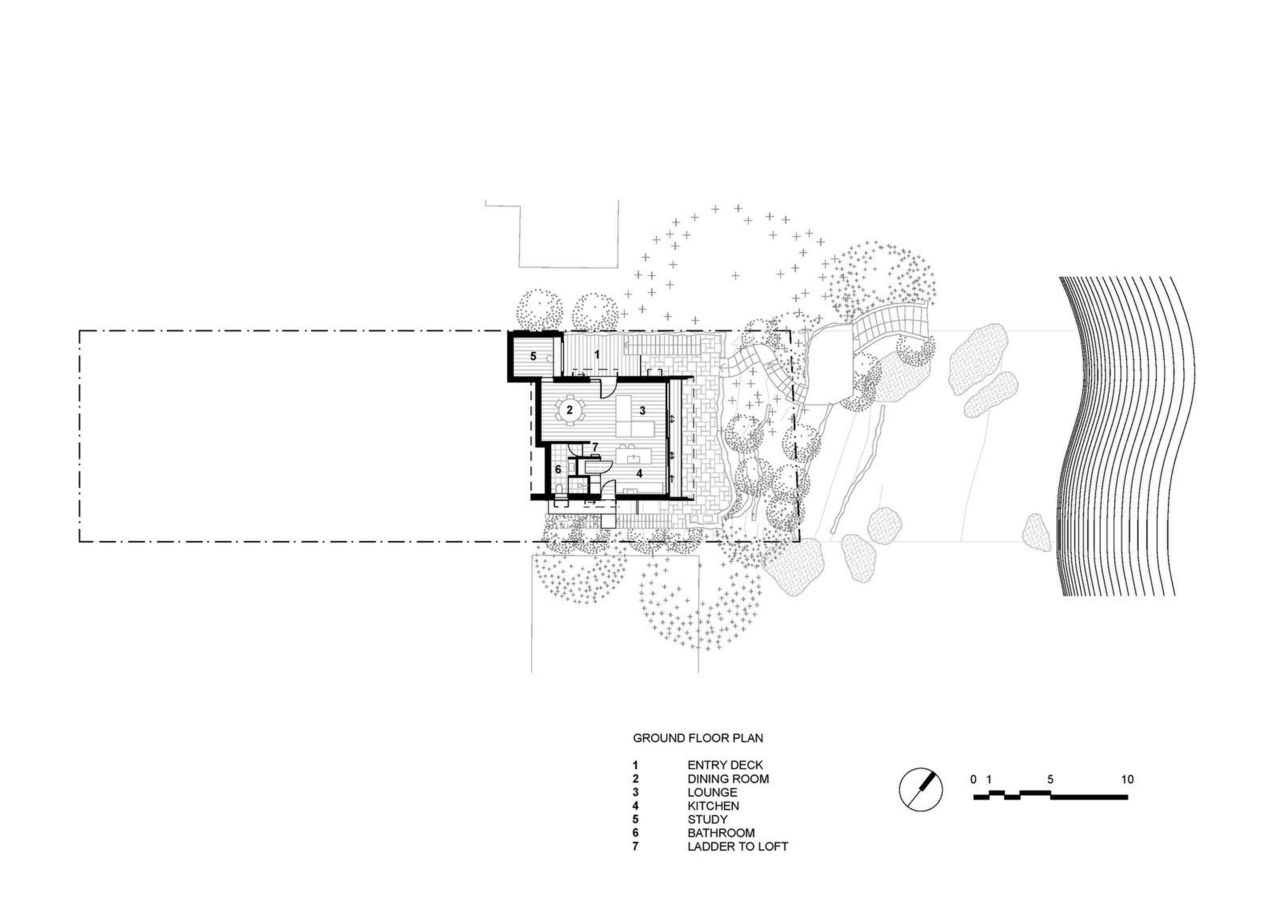
The main floor is accessed through an entry deck from a series of terraces and staircases leading up from the water.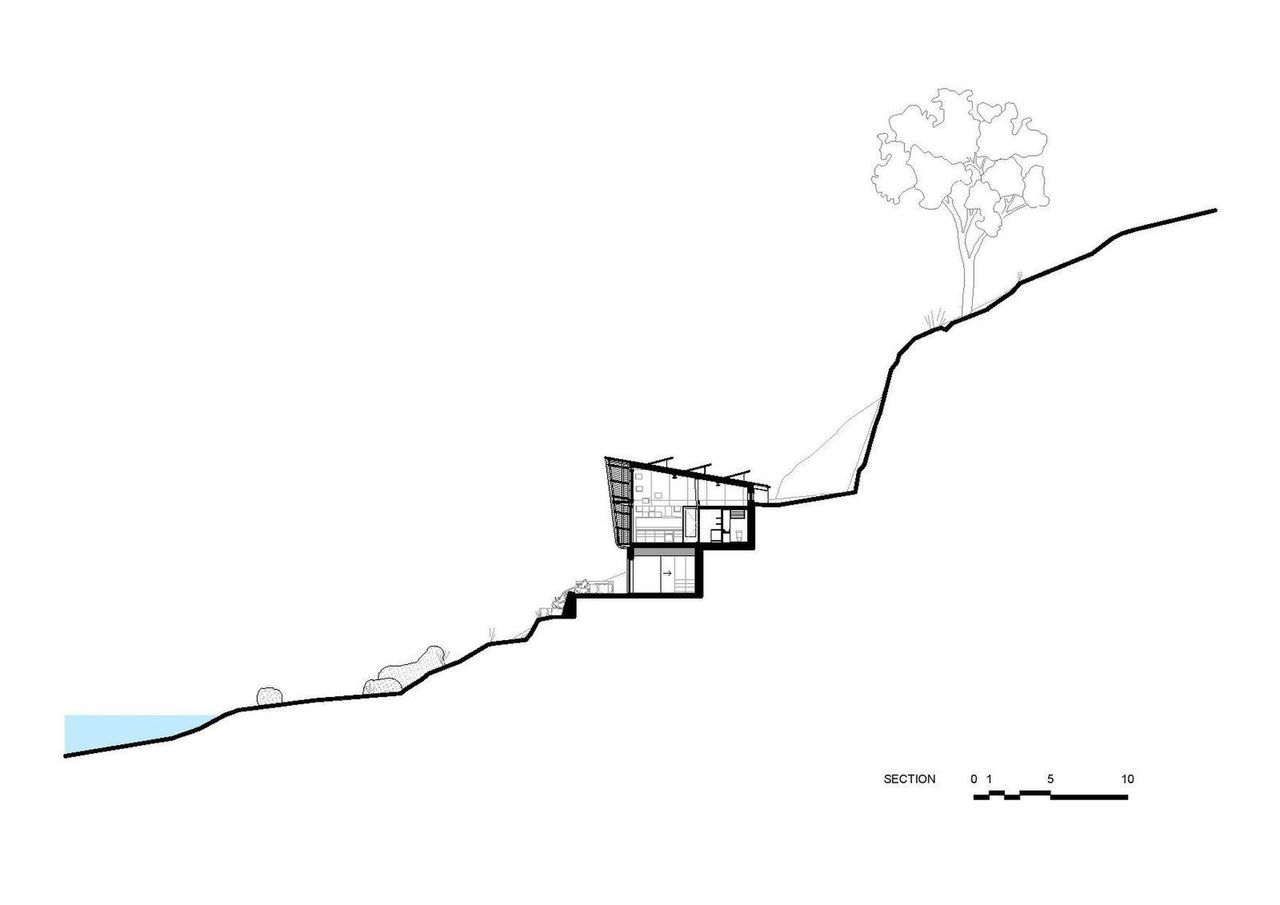
The one-bedroom home sits perched on the cliff, oriented towards the water.

Tropical Boho Homes With Beautiful Vignettes & Vistas
Two tropical boho home designs, featuring swimming pools, cozy lighting schemes, interior archways, natural accents, and beautiful decor vignettes.


![A Tranquil Jungle House That Incorporates Japanese Ethos [Video]](https://asean2.ainewslabs.com/images/22/08/b-2ennetkmmnn_t.jpg)









